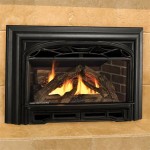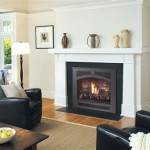Fireplace Bumper Guard: Safety and Style for Your Hearth
A fireplace can be a central feature of a home, providing warmth and aesthetic appeal. However, the hard edges and heat-retaining materials of a fireplace also present potential safety hazards, especially for young children, pets, and the elderly. A fireplace bumper guard is designed to mitigate these risks by providing a cushioned barrier around the hearth, preventing injuries from accidental bumps and falls and minimizing the risk of burns from contact with hot surfaces.
The implementation of a fireplace bumper guard is a practical solution for enhancing safety without compromising the visual appeal of a fireplace. Available in various materials, designs, and sizes, these guards can be tailored to complement different fireplace styles and home décor. They range from simple, utilitarian models to more decorative options that integrate seamlessly with existing fireplace aesthetics. The primary function remains consistent: to provide a protective layer that reduces the likelihood and severity of fireplace-related accidents.
Understanding the Need for Fireplace Bumper Guards
The need for fireplace bumper guards stems from the inherent risks associated with the physical properties of a traditional fireplace. Hearth materials like stone, brick, and tile are often hard and unyielding, resulting in a high potential for injury upon impact. Sharp corners and edges further exacerbate the risk, particularly for individuals with limited mobility or children who are still developing their coordination and balance.
Furthermore, the elevated temperature of a fireplace, even after the fire has been extinguished, poses a burn hazard. The materials used in fireplace construction retain heat for extended periods, and accidental contact can result in painful burns. This risk is particularly acute for young children who may be unaware of the potential danger. A fireplace bumper guard serves as a physical barrier, preventing direct contact with these hot surfaces and reducing the risk of accidental burns.
Data on home injuries often highlight the frequency of accidents involving furniture and fixtures, including fireplaces. While specific statistics on fireplace-related injuries may vary, it is well-established that falls and collisions with hard surfaces are a leading cause of emergency room visits, especially for children and the elderly. A fireplace bumper guard provides a proactive measure to address this risk, creating a safer environment within the home.
Types of Fireplace Bumper Guards and Materials
Fireplace bumper guards are available in a variety of styles and materials, each offering different levels of protection and aesthetic appeal. The choice of bumper guard depends on factors such as the size and shape of the hearth, the overall décor of the room, and the specific safety needs of the household.
Foam Bumper Guards:
These are typically made of dense, closed-cell foam and are designed to absorb impact and provide cushioning. Foam bumper guards are often the most affordable option and are easy to install, typically using adhesive strips. They are available in various colors and thicknesses and can be easily trimmed to fit specific hearth dimensions. The primary advantage of foam bumper guards is their affordability and ease of installation, but they may not be the most aesthetically pleasing option for all homeowners.Fabric-Covered Bumper Guards:
These feature a foam or rubber core covered in a durable fabric such as canvas, vinyl, or leather. Fabric-covered bumper guards offer a more refined look than foam options and can be customized to match the existing décor of the room. They are available in a wide range of colors, patterns, and textures. The fabric covering also provides an additional layer of protection against heat. Installation methods vary depending on the design, but many fabric-covered bumper guards use adhesive strips or Velcro for easy attachment and removal.Custom-Built Bumper Guards:
For homeowners seeking a seamless integration with their existing fireplace design, custom-built bumper guards offer a tailored solution. These are typically constructed from wood, metal, or composite materials and are designed to match the style and dimensions of the hearth. Custom-built bumper guards may incorporate features such as built-in storage or decorative elements. The construction process involves precise measurements and careful craftsmanship to ensure a perfect fit and a cohesive aesthetic. Custom-built bumper guards are often the most expensive option, but they provide the highest level of customization and aesthetic integration.Inflatable Bumper Guards:
These are less common but offer a unique advantage in terms of portability and storage. Inflatable bumper guards are made of durable PVC or similar materials and can be inflated or deflated as needed. They are ideal for temporary use or for homes where the fireplace is not used regularly. When deflated, they can be easily stored away, saving space. However, inflatable bumper guards may not offer the same level of impact absorption as foam or fabric-covered options.The choice of material also influences the level of heat resistance. While all fireplace bumper guards are designed to provide some degree of thermal protection, some materials are more effective than others. Fire-retardant fabrics and high-density foams are particularly suitable for use near a fireplace, as they are less likely to ignite or melt upon exposure to heat.
Installation and Maintenance of Fireplace Bumper Guards
The installation process for a fireplace bumper guard depends on the type of guard and the material of the hearth. Most foam and fabric-covered bumper guards are designed for easy, do-it-yourself installation using adhesive strips or Velcro. The first step is to thoroughly clean the surface of the hearth to ensure proper adhesion. The bumper guard is then carefully positioned and attached to the hearth, ensuring that it is securely fastened and covers all exposed edges and corners.
Custom-built bumper guards typically require professional installation, as they often involve more complex mounting procedures. Ensuring correct measurements and secure attachment is crucial for both safety and aesthetic reasons. The installation process may involve drilling, screwing, or other methods of fastening the bumper guard to the hearth.
Maintenance of a fireplace bumper guard is generally straightforward. Foam and fabric-covered guards can be cleaned with soap and water or a mild detergent. It is important to avoid using harsh chemicals or abrasive cleaners that could damage the material. Fabric-covered guards may require occasional spot cleaning or professional cleaning to remove stains. Custom-built bumper guards may require periodic maintenance, such as painting or staining, to maintain their appearance.
Regular inspection of the fireplace bumper guard is important to ensure its continued effectiveness. Check for signs of wear and tear, such as tears, cracks, or loose adhesive. Replace the bumper guard if it is damaged or no longer providing adequate protection. Over time, the adhesive may weaken or the material may deteriorate, reducing its ability to absorb impact and protect against burns.
It's also crucial to consider the placement of the bumper guard in relation to the fireplace opening. The guard should be positioned to provide maximum coverage of the hearth while allowing sufficient clearance for the fireplace doors or screen. In cases where the fireplace is frequently used, the bumper guard should be heat-resistant and designed to withstand prolonged exposure to high temperatures.
The lifespan of a fireplace bumper guard depends on several factors, including the quality of the materials, the frequency of use, and the level of maintenance. High-quality bumper guards made from durable materials can provide years of reliable protection. However, even the best bumper guard will eventually need to be replaced. Regular inspection and timely replacement are essential for maintaining a safe and secure fireplace environment.
It is always recommended to consult with a professional fireplace installer or safety expert for guidance on selecting and installing the appropriate type of fireplace bumper guard for a specific home. They can provide valuable advice on ensuring optimal safety and protecting against potential hazards. Adhering to manufacturer's instructions and safety guidelines is paramount for a successful and safe installation.

Safety 1st Foam Fireplace Hearth Bumper Hs252 The Home Depot

Safety 1st Foam Fireplace Hearth Bumper Hs252 The Home Depot

Kidon Fireplace Bumper Pad Target

Old Crib Bumper Around Fireplace And Other New Uses For Bumpers Sounds Like A Good Idea Us Baby Proof

Baby Safety Foam Soft Seat Edge Cushion Fireplace Hearth Guard Bumper Pad Child Proof Padding Small Gray Fits Width From 0 68 Yahoo Ping

Project Redecorate How To Make A Hearth Guard Melly Sews

Cardinal Gates Fireplace Cushion Hearth Pads Brown Spk Br C The Home Depot

Kidon Hearth Cushion Taupe Made In Usa Foam Rubber Edge And Corner Guard Babyproof Fireplace Padding Child Safety Bumper Com

Fireplace Bumper Temu

Result For Fireplace Wall With Wood Storage Seating Design White








